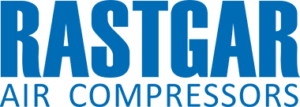Understanding the sources of compressed air contamination and the types of contaminants which must be reduced or eliminated is a key factor in planning an efficient compressed air system. In a typical compressed air system, there are ten major contaminants that have to be removed or reduced to protect the consumer and provide a safe and cost-effective production facility. These contaminants come from four different sources.
Source 1: Atmospheric Air
Compressors draw in huge amounts of atmospheric air which continuously fills the system with invisible
contaminants such as:
- Water vapor
- Atmospheric dirt
- Oil vapor
- Micro-organisms
Source 2: The Air Compressor
In addition to the contaminants drawn in from the atmosphere, oil lubricated compressors will contribute small amounts of oil from the compression process. The oil will be in the form of:
- Liquid oil
- Oil aerosols
- Oil vapor
After the compression stage, the after-cooler will cool the air, condensing water vapor and introducing it into the compressed air as:
- Liquid water
- Water aerosols
Sources 3 & 4: Compressed air storage devices & distribution piping
As the air leaves the compressor it now contains eight different contaminants. The air receiver (storage device) and the system piping that distribute the compressed air around the facility can store large amounts of this contamination. Additionally, they cool the warm, saturated compressed air which causes condensation on a large scale adding more liquid water into the system and promoting corrosion and microbiological growth:
- Rust
- Pipescale
Contaminant removal
To operate a safe and cost effective compressed air system, contamination must be removed or reduced to acceptable limits.
Failure to remove contamination can cause numerous problems in the compressed air system, such as:
- Microbiological contamination
- Corrosion within storage vessels and the distribution system
- Damaged production equipment
- Blocked or frozen valves, cylinders air motors and tools
- Premature unplanned desiccant changes for adsorption dryers
In order to select suitable downstream equipment according to air quality requirement in order to remove compressed air contamination
